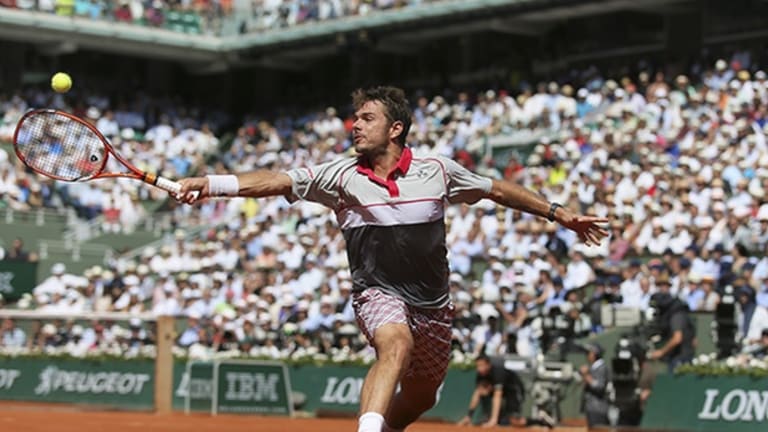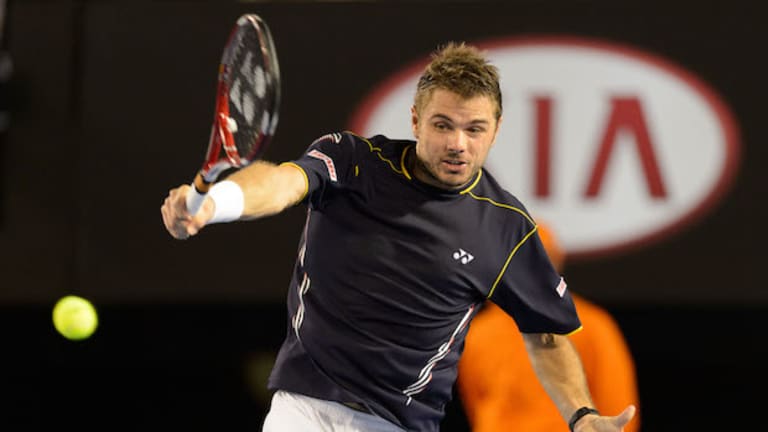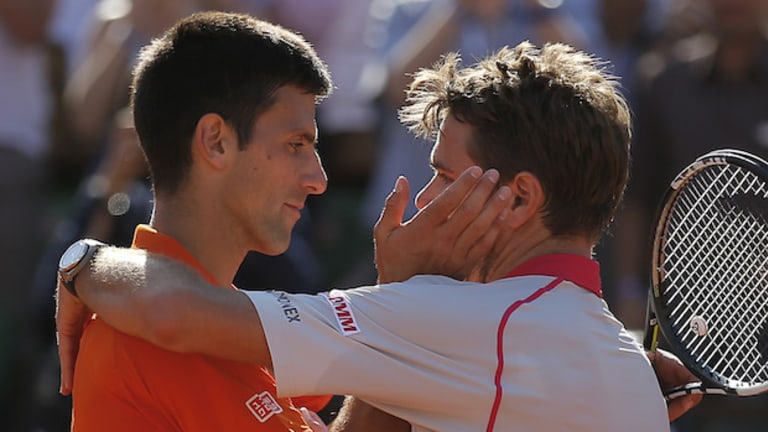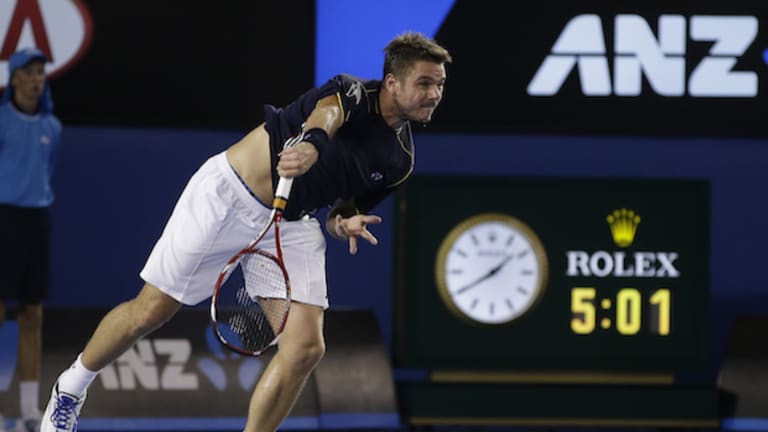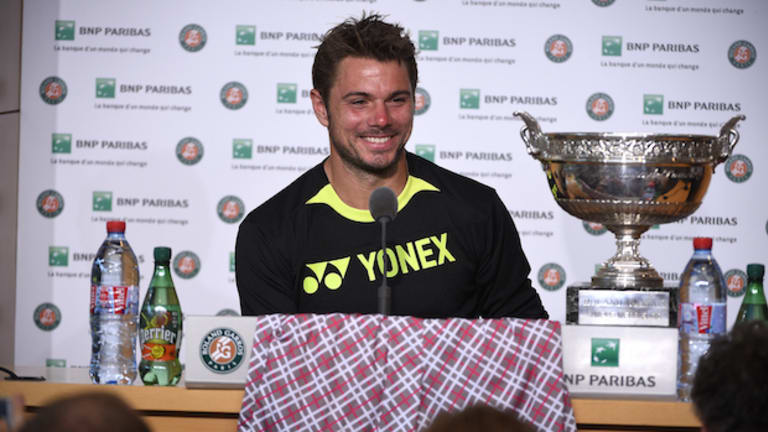The lights in the theater below Madison Square Garden were turned a cool blue as Serena Williams, Caroline Wozniacki, Gael Monfils and Stan Wawrinka walked out from behind a curtain for a press conference. It was March 8, World Tennis Day, and they were in the Big Apple to hit, giggle and entertain a crowd of 16,000. This being New York City, though, home of the nation’s most ravenous media beast, they had to answer a few questions before they were allowed to play.
Cameras clicked and reporters pressed forward while the emcee recited each player’s credentials. Wozniacki was described as a two-time No. 1. Williams was called the greatest female athlete in history. Monfils, it was agreed, was the most electrifying player in the game. When Wawrinka’s turn came, he was duly credited with his two major titles, but the emcee had to stop and ask what else he had done.
“You won an Olympic gold medal, right?”
Wawrinka smiled wryly and nodded his head. Yes, as a matter of fact, he had.
With introductions out of the way, the questions began. The majority were directed at Williams and Wozniacki, with a stray query or two for a sleepy-looking Monfils. As the minutes ticked by, and no one seemed to notice him, Wawrinka’s smile grew wider and wryer: He had become the invisible Grand Slam champion in the room. Just when it looked as if he might leave without opening his mouth, Wawrinka was asked how it felt to be in the Garden for the first time.
He leaned forward and grinned.
“Finally, a question, thank you so much!”
Wawrinka said these words in jest, rather than resentment. This 31-year-old farmer’s son from Switzerland is used to playing tennis’ odd man out. In many ways, it has defined his career. Being cast in that role is part of what kept him from fulfilling his vast potential during his 20s, and it’s what has driven him, over the last three years, to make good on that same promise. Even now, despite being a virtual lock for the International Tennis Hall of Fame, Wawrinka doesn’t fit easily into the narrative of his time.

